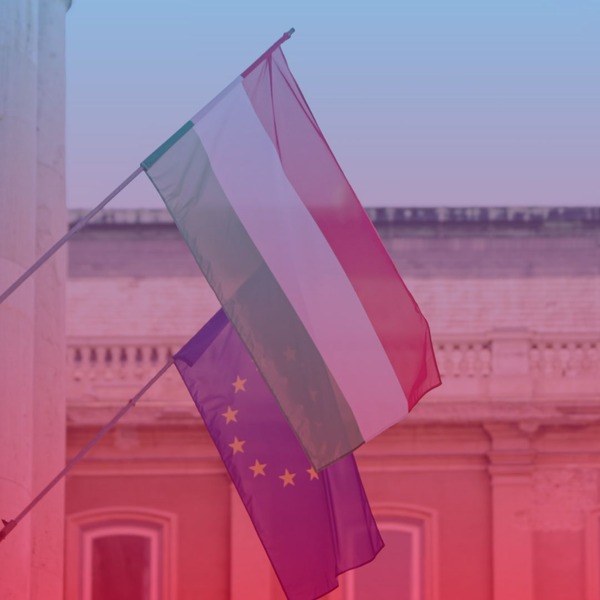
Written by Andri Stavrou
“One man’s terrorist is another man’s freedom fighter.” – “Darrell Trent, 1974”
The phrase has been found in numerous sources and texts. Every author defined it according to his/her own perspective taking into consideration factors such as personal experiences, education and religion. A terrorist can be called freedom fighter and a freedom fighter can be named terrorist. An illustrated example is the case of Nelson Mandela. He remained in History as a freedom fighter because he opposed to “the imperial/colonial/apartheid paradigm of war, racial hatred and separation of the races” (Sabelo J, 2014). Nevertheless, there was a time, when mankind considered him a terrorist as he promoted, as the leader of the African National Congress (ANC) Youth League, a military wing against the regime of South Africa (Sabelo J, 2014).
An agreed definition in the international scene is by far one of the most difficult issues, considering the various numbers of perspectives that one may interpret terrorism. There are different opinions and fields of study that can be applied such as sociological, psychological, legal, political, moral and ideological. The article will proceed as follows: first, it will illustrate the etymology and origins of terrorism. Secondly, it will present the legal framework of the term and finally elaborate the American and European perspective.
Etymology of terrorism
Searching for the term “terrorism” and “terror” in the Cambridge dictionary, one may find the following definitions: terrorism is a “violent action for political purposes” and terror is linked to “extreme fear” or “ violent action or threats designed to cause fear among ordinary people, in order to achieve political aims”. One may raise a question: when this term has been identified with negative emotions such as fear, violence and threats? The term was added to the Oxford English Dictionary for the first time in the aftermath of French Revolution in 1793. The term derives from the Latin Terrere which means to frighten. “The Latin term terrere refers to the Greek treo and the Sanskrit trasati” (Fine, 2010). The term terrorism appeared for the first time in 1798 in the Dictionnaire de L’Académie française to describe it as a “system, a regime of terror”. Terror was formed through “a gradual process as a collective choice” (Linton, 1976).
The origins of terrorism
Modern concepts such as :“terrorism” and “terrorist” first emerged during the French Revolution in 1789 and reached their peak during the years 1793-1794 (Fine, 2010). Maximilien Robespierre, a revolutionary bourgeoise at the time and defender of the working class, let radical violence dominate under the Jacobin government which lead to terror (Linton, 2006). After the outbreak of rebellion, Louis XVI, France’s last king, struggled to establish a constitutional monarchy, which ended in failure, provoking “revolt and civil war” (Linton, 2006). A new republic government was formed in 1792 after the defeat of the French army. In 1793, the inability of the government to deal with some situations, lead to the use of the radical violence by the Jacobins, an extreme left group of the opposition, in order to gain the power and draft a new constitution. Meanwhile, violence had been used as a tool to put pressure on debuties. Leaders of another extreme left group and the queen of France went to the guillotine (Linton, 2006). Linton illustrates that:
“For the first time in history terror became an official government policy, with the stated aim to use violence in order to achieve a higher political goal. Unlike the later meaning of ‘terrorists’ as people who use violence against a government, the terrorists of the French Revolution were the government. The Terror was legal, having been voted for by the Convention.”
After “the assassination of King Alexander I of Yugoslavia and the President of the Council of the French Republic, Louis Barthou, in Marseilles in 1934 by persons who would today be described either as Yugoslav freedom fighters or terrorists depending on one’s political ideology” (Dugard, 1974, p.68).
International legal framework
The first attempt to combat and define terrorism, through the framework of international legal instruments, was in 1937, when the League of Nations concluded to the Convention for the Prevention and Punishment of Terrorism, signed by twenty-four states. However, it never came into effect due to lack of consensus among member states and the dissolution of the organization at a later stage (Saul, 2006). In the Convention, article 1§2, it states that: the expression “acts of terrorism” means criminal acts directed against a State and intended or calculated to create a state of terror in the minds of particular person, or a group of persons or the general public”.
In 1954, the International Law Commission (ILC) compared terrorism in the Draft Code, article 2§6, as an Offense against the Peace and Security of Mankind, in particular: “the undertaking or encouragement by the authorities of a State of terrorist activities in another State, or the toleration by the authorities of a State of organized activities calculated to carry out terrorist acts in another State.” In this case, terrorism was associated with the act of aggression. However, the terms : “terrorist activities” and “terrorists acts” are not defined at all (Saul, 2005, p.67). In 1972, U.S proposed a Draft Convention for Prevention and Punishment of terrorism acts to the General Assembly that never came into effect due to lack of support by “Arab and African states, and China” (Saul, 2005, p. 70).
In 1991, the Report of the ILC on the work of its forty-third session enriched and clarified the term, article 24, as such: “An individual who as an agent or representative of a State commits or orders the commission of any of the following acts: undertaking, organizing, assisting, financing, encouraging or tolerating acts against another State directed at persons or property and of such a nature as to create a state of terror in the minds of public figures, groups of persons or the general public”. Nevertheless, it is applicable only to acts related to a State and not to private individuals (Sunga, 1997). In 1997, the Terrorist Bombings Convention and in 1999 the Terrorist Financing Convention had been drafted by the General Assembly of the United Nations without agreement from all the associated states. Moreover, in 2000 a Draft Comprehensive Convention has emerged by the UN without any agreement proving the complexity of the term and the limited progress.
The American Perspective
The United States Code, Title 22, Section 2656f defined the term as follows:
(1) the term ‘‘international terrorism’’ means terrorism involving citizens or the territory of more than 1 country;
(2) the term ‘‘terrorism’’ means premeditated, politically motivated violence perpetrated against noncombatant targets by subnational groups or clandestine agents;
(3) the term ‘‘terrorist group’’ means any group practicing, or which has significant subgroups which practice, international terrorism;
The American Heritage Dictionary provides a more comprehensive definition as such: “unlawful use or threatened use of force or violence by a person or an organized group against people or property with the intention of intimidating or coercing societies or governments, often for ideological or political reasons”(National Research Council, 2002). J. Sinai in his article proposed a new definition, after the controversies over the terms “noncombatants”, “armed military”: “Terrorism is a tactic of warfare involving premeditated, politically motivated violence perpetrated by subnational groups or clandestine agents against any citizen of a state, whether civilian or military, to influence, coerce, and, if possible, cause mass casualties and physical destruction upon their targets. Unlike guerrilla forces, terrorist groups are less capable of overthrowing their adversaries’ governments than on inflicting discriminate or indiscriminate destruction that they hope will coerce them to change policy.”
The European perspective
On European level, a Convention on the Suppression of Terrorism had been ratified, in 1977, by all Member States of the Council of Europe. However, as it is stated in it, the convention did not provide “a comprehensive definition of terrorism”, but rather “it draws up a list of terrorist acts defined either autonomously or by reference to international conventions” (Dumitriu, 2004). In 2005, the Council of Europe adopted a Convention on the Prevention of Terrorism without providing a definition, but rather “criminalize public provocation to commit a terrorist offence and recruitment and training for terrorism” (Pawlack, 2015). In the Council Common Position 2001/931/CFSP and in Council Framework Decision 2002/475/JHA, the EU clarified its approaches on the measures combating terrorism (Pawlack, 2015).
Terrorist Groups
The proposal for a Council framework Decision on combating terrorism defines terrorist groups as “a structured organisation, established over a period of time, of more than two persons acting in concert to commit terrorist acts”. The U.S has published a list with groups that have been considered from the U.S terrorist and they can be found under the name “Foreign Terrorist Organizations (FTOs)”. For instance, Al Qaeda, an organization that was created by Osama Bin Laden “in the late 1980s to bring together Arabs who fought in Afghanistan against the Soviet Union. Helped finance, recruit, transport, and train Sunni Islamic extremists for the Afghan resistance” (Department of State, Background Information on Designated Foreign Terrorist Organizations). Many people argued that the leader of the group managed to create the organization due to CIA’s support in 1980s. In particular, Islamists extremists “were trained by the CIA and funded by the Saudis, in order to defeat the Russians in Afghanistan” (Chengu, 2004). Without Americans expecting that, Al -Qaeda “turned against its US patron a result of American policies growing out of the 1991 Iraq war” (Hinnebusch, 2007). Hillary Clinton in a public statement in Middle East Press in 2016, declared the relation between the Al Qaeda and US as follow:
“the people we are fighting today we funded them twenty years ago and we did it because we were locked in a struggle with the Soviet Union. They invaded Afghanistan… and we did not want to see them control Central Asia and we went to work… and it was President Reagan in partnership with Congress led by Democrats who said you know what it sounds like a pretty good idea… let’s deal with the ISI and the Pakistan military and let’s go recruit these mujahideen.”
The 9/11 was a crucial point for the Bush administration who seized the opportunity to gain support for an invasion in a Middle Eastern state, declaring a “war on terror”. At that time, Iraq was an easy target and “the world’s second-largest oil reserve” that would provide to the U.S the position of Oil Hegemon in order to overcome in power its competitors such as Europe, France, Russia, Japan, India and in particular China which seems to be emerging as a global power – rival (Hinnebusch, 2006, p. 284). One may argue that a “war on terror” was also terrorism as invaded Iraq without the lawful consent of one of the six organs of the United Nations, the Security Council.
To conclude, universal attempts such as conventions and treaties have been signed and ratified in the name of terrorism, however, none of them became a benchmark for the international community. For instance, the UN Resolution 1373, demand constantly states to “work together urgently to prevent and suppress terrorist acts” (Pawlack, 2015). Terrorism has remained one of the greatest challenges and threats that states have to deal with. Domestic operations and military troops within the EU countries prove that states adapt their security and defense systems. Taking into consideration that the political interests come always first, it makes it extremely difficult to agree upon a universal definition in the distant future.
Andri Stavrou is currently pursuing a master degree in Political Science at the Free University of Brussels, specializing in the impact of the Iraq war to the U.S. She has previously studied French and European Studies at the University of Cyprus, and her thesis focused on the migration within Europe. After interning at the two Diplomatic Missions of Cyprus in Brussels, she worked further on Middle Eastern Politics. Moreover, interning for a political party of Belgium, she concentrated on Defense and Security and in particular on military operations deployed in Belgium and France. Besides that, she is engaged in NGOs that fight for gender equality and extreme poverty.
References
Aven. T and Guikema. S. (2015). On the Concept and Definition of Terrorism Risk, Risk Analysis, Vol. 35, No. 12.
Censer. J.R. (2014). Historians revisit the Terror – Again, Journal of Social History vol. 48 no. 2, pp. 383–403.
Department of State, Background Information on Designated Foreign Terrorist Organizations. Available at: https://www.state.gov/documents/organization/10300.pdf
Dugard. J. (1974). International Terrorism: Problems of Definition, International Affairs (Royal Institute of International Affairs 1944-), Vol. 50, No.1, pp. 67-81.
Dumitriu E. (2004). The E.U.’s Definition of Terrorism: The Council Frame-work Decision on Combating Terrorism, German Law Journal, Vol. 05, No 05.
Hinnebusch, R (2006). Hegemonic Stability Theory Reconsidered: Implications of the Iraq War, The Iraq war: Causes and Consequences, Lynne Rienner Publishers, London, p.284.
Fine, J (2010). Political and Philological Origins of the Term ‘Terrorism’ from the Ancient Near East to Our Times, Middle Eastern Studies, 46:2, 271-288.
Linton M. (2006). Robespierre and the Terror, History Today, Vol. 56, No. 8.
Linton, M. (1976). Choosing Terror: Virtue, Friendship, and Authenticity in the French Revolution, New York, Oxford University Press, 323 pp.
Middle East Press. (2016). Clinton: We Created Al-Qaeda. Available at: http://middleeastpress.com/english/clinton-we-created-al-qaeda/ [
Pawlack, Patryk (2015). Understanding definitions of terrorism, European Parliamentary Research Service. Available at: http://www.europarl.europa.eu/RegData/etudes/ATAG/2015/571320/EPRS_ATA(2015)571320_EN.pdf
Sabelo J. Ndlovu-Gatsheni. (2014). From a ‘terrorist’ to global icon: a critical decolonial ethical tribute to Nelson Rolihlahla Mandela of South Africa, Third World Quarterly, Vol. 35, No. 6, 905–921.
Saul B. (2006). The Legal Response of the League of Nations to Terrorism, Journal of International Criminal Justice, Vol. 4, Issue 1, pages 78–102.
Saul B. (2005). Attempts to define “terrorism” in international law, Netherlands International Law Review, LII: 57-83.
Sunga L. (1997). The Emerging System of International Criminal Law, Kluwer Law International, The Hague, p. 200
Shuja M,S. (2004). Is the new world order emerging?, Contemporary Review, Vol.284.
Sinai J. (2008). How to define Terrorism, Perspectives of Terrorism, vol.2, issue 4.
Sorel JM. (2003). Some questions about the Definition of Terrorism and the Fight Against its Financing, EJIL, Vol.14, No 02, p. 365-378.
The Washington Post (2002). Text of President Bush’s 2002 State of the Union Address. Available at: http://www.washingtonpost.com/wp-srv/onpolitics/transcripts/sou012902.htm
National Research Council. (2002). Terrorism: Perspectives from the Behavioral and Social Sciences, National Academies Press, Washington DC.
1991 ILC Yearbook vol.II, part two, Report of the International Law Commission on the work of its forty-third session (A/CN.4/SER.A/1991/Add.l (Part 2).
1937 Convention for the Prevention and Punishment of Terrorism, United Nations.
1954 ILC Draft Code of Offences against the Peace and Security of Mankind, UN.
United Nations Office at Geneva Library.
United States Code, 2006 Edition, Supplement 4, Title 22 – Foreign relations and intercourse, Section. 2656f – Annual country reports on terrorism
Council Framework Decision 2002/475/JHA. Available at: https://eur-lex.europa.eu/legal-content/EN/TXT/?uri=LEGISSUM%3Al33168
Council Common Position 2001/931/CFSP. Available at : http://eur-lex.europa.eu/LexUriServ/LexUriServ.do?uri=OJ:L:2001:344:0093:0096:EN:PDF

 The ’Ndrangheta’s Infiltration and Threat to European Institutions
The ’Ndrangheta’s Infiltration and Threat to European Institutions  From Paper to Practice: How Grassroots Norms Undermine Gender Rights in Pakistan
From Paper to Practice: How Grassroots Norms Undermine Gender Rights in Pakistan  Exploited Childhoods: The Role of Global Corporations in Perpetuating and Mitigating Child Labour
Exploited Childhoods: The Role of Global Corporations in Perpetuating and Mitigating Child Labour  Human Rights Challenges in Addressing SLAPPs in Media, NGOs and Journalism in the EU
Human Rights Challenges in Addressing SLAPPs in Media, NGOs and Journalism in the EU 


